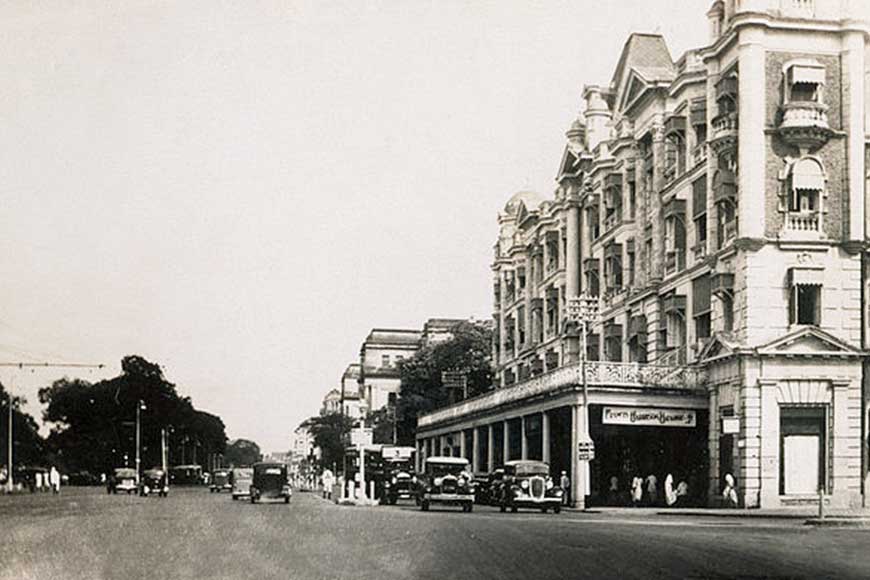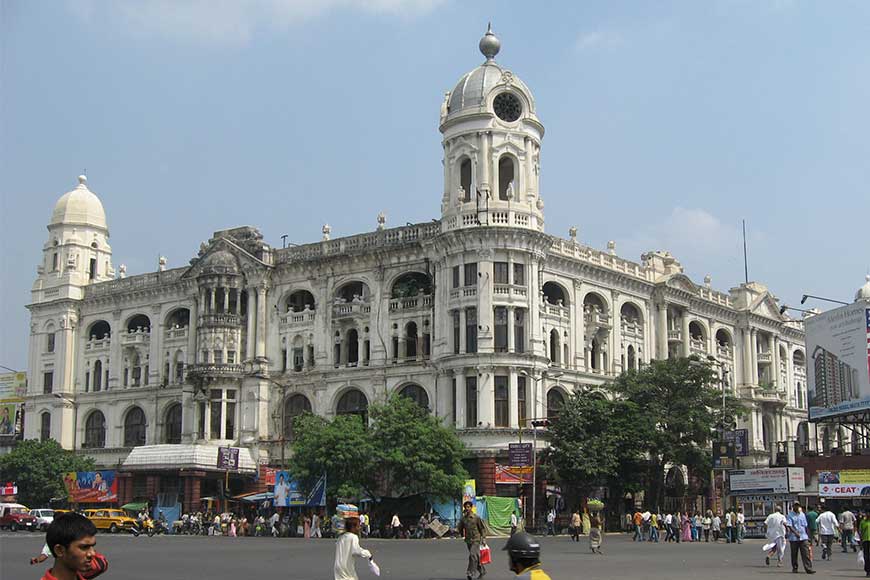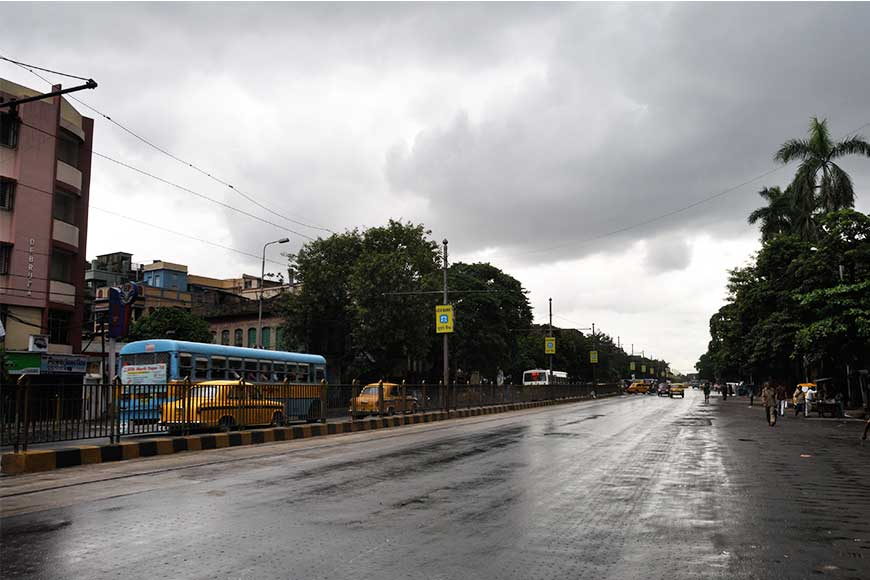Which was Kolkata’s First Road? And which was the first road with a footpath?

Can any one name the first metal road of Kolkata? Radharaman Mitra, the scholar who had enormous knowledge about the history of Calcutta metropolis, wrote in his ‘Kolkata Darpan,’ in 1706, land survey of the three villages, Sutanuti, Kolkata and Gobindapur were carried out for the first time. The survey depicted a majority of the plot under Sutanuti and Gobindapur were densely forested land. Kolkata village was divided into two parts – Bazar Kolkata and Dihi Kolkata. The survey recorded the existence of two streets and two lanes but there was no mention of any road or by-lanes.
The development of the erstwhile villages is evident from later surveys where the number of thoroughfares increase gradually. In the survey conducted in 1756, 27 streets, 52 lanes and 74 by-lanes were recorded. High roads did not exist in Kolkata then. All the streets and lanes were dirt roads and people walked on these roads. The other means of communications were bullock carts, horses and palanquins.

Calcutta’s first highway was the Circular Road. It was a chipped path, one where small pieces of gravels were used as surface for laying the road. Horse carriages started plying after this road was built. This road was constructed after covering up the Marhatta Ditch, also known as Baghbazar Khal, with gravel, soil and sand. From 1799, people started using this road regularly. The ditch was dug by the British for protection of the villages from foreign attacks. However, Bengal’s last independednt Nawab, Siraj-ud-Daulah’s attack of Kolkata proved once and for all the futility of the ditch as an obstacle to keep enemies at bay.
The British had initially decided to dig a seven-mile long ditch to create a barrier and keep the Maratha bandits from entering the villages. Accordingly, work was completed on the first three-miles stretch but by then the Marathas had stopped their guerrilla warfare and hence the digging work was abandoned mid. This trench was filled later and Circular Road was laid. We now know this road by its dual names bestowed on it for its two stretches – Upper Circular Road (Jagadish Chandra Bose Road) and Lower Circular Road (Acharya Prafulla Chandra Road)
Having been elevated from merchants to rulers, the immediate concern of the East India Company officials was to provide wide roads for easy movement of their army, establishment of commercial interests wherever possible and attending to the urgent needs of fire control and prevention of epidemics in their seat of power i.e. Kolkata.
With these goals in mind, Governor General Lord Wellesley (1798-1805) began the planning process with his prescriptive ‘Minute on Calcutta' in 1803 which led to the setting up of the Lottery Committee in 1817 — so called because funds for city development were raised through public lotteries. Between 1805 and 1836, funds raised from lottery sales were channelized to construct a large number of streets including Elliot Road, Strand Road (from Prinsep Ghat to Hatkhola), Wood Street, Wellesley Street, Wellington Street, College Street, Cornwallis Street, Hastings Street, Moira street, Loudon Street, Amherst Street, Hare Street, Colootola Street, Mirzapur Street, Canal Street etc. Money was also sanctioned for the upgrading of Bentinck Street, Kyd Street and Free School Street. Moreover, funds were released for the upkeep of Maidan, the pedestrians’ stretch across Maidan and adjoining roads.
Calcutta was indeed going through momentous changes under the British rule. New roads and neighbourhoods were planned, channels for drainage were being dug, new structures were coming up and existing buildings refurbished. Planning encompassed not only the regulation of physical spaces, but also the multiple concerns of health, policing and commerce.

Later, Governor General Auckland set up the ‘Fever Hospital and Municipal Enquiry Committee,’ headed by Sir John Peter Grant. The committee had Indian representatives as well and they included Prince Dwarakanath Tagore, Prasannakumar Tagore, Rasamoy Dutta and Rustomji Kawasji. The committee submitted three reports and based on these reports, certain decisions were legalized. According to the law, roads where motor vehicles would ply, would have to be straight and 50 ft wide and non-motorable roads would have to be 20 ft broad. All narrow lanes that did not adhere to this law, would be demolished. However, in 1852, the law was abolished.
From July 1857, Oriental Gas Company illuminated the city streets with gas lamps. In 1858, Chowringhee Road was furnished with a footpath. This was the first road in Kolkata to be attached to a footpath. The Calcutta Improvement Trust (CIT) was set up in 1912 through the Calcutta Improvement Act, 1911. Following a recommendation from a government appointed commission and public opinion, the trust was created with the purpose of expansion and improvement of Kolkata and its urban surroundings. The British have left but they left a rich legacy of nurturing and developing projects for the city they loved and CIT, now merged with Kolkata Metropolitan Development Authority (KMDA) has been taking the mission zealously and doing the work diligently.












